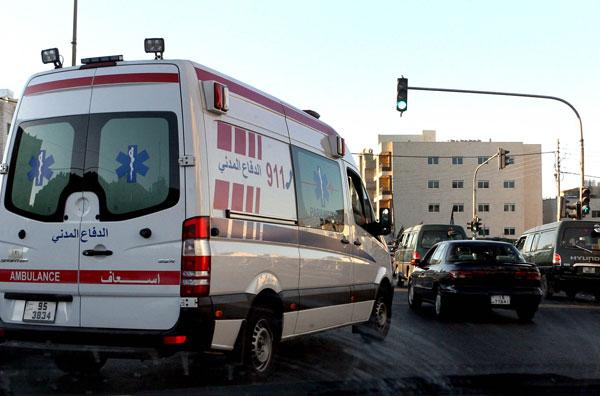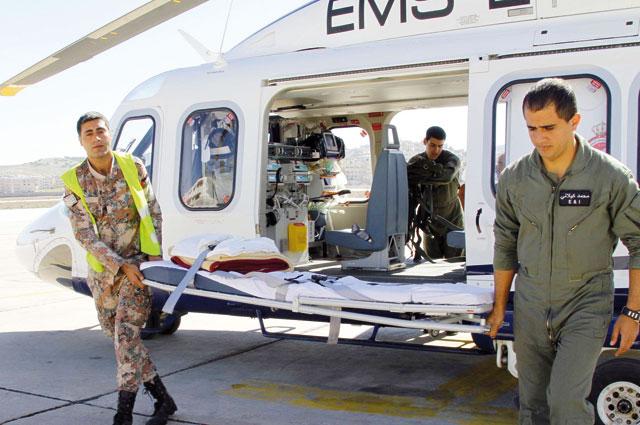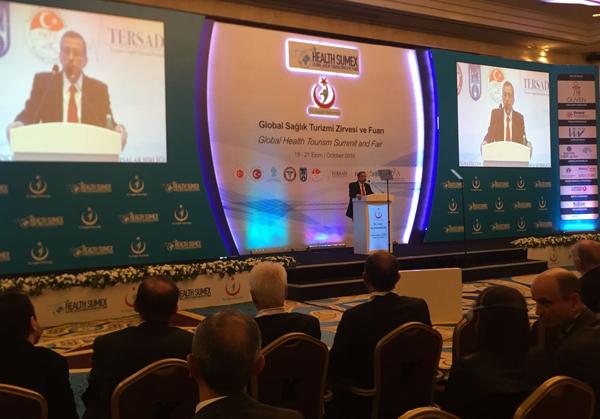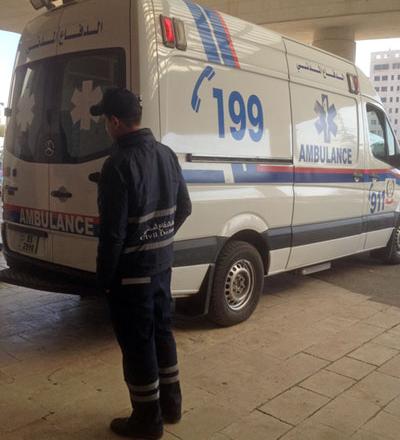You are here
Summer traffic risks delays to emergency response time
By Mohammed Kloub - Jul 30,2016 - Last updated at Jul 30,2016

The average emergency response rate globally is approximately seven minutes, and the Civil Defence Department remains close to that number in most situations (File photo)
AMMAN — With the influx of private vehicles on Jordan’s streets during the summer, fire engines and ambulances may experience delays in response times, according to the Civil Defence Department (CDD).
Cars usually try to make way for emergency vehicles, but it is not so easy during rush hours in Amman and other governorates, according to CDD Media Director Brig. Gen. Farid Sharaa.
The problem tends to be exacerbated in the summer, when expatriates return to the Kingdom and large numbers of tourists arrive.
In some situations when traffic is gridlocked, drivers cannot make way for emergency vehicles even if they want to.
But Sharaa told The Jordan Times, in a recent interview, that the Kingdom’s emergency services still manage to respond swiftly.
The average emergency response rate globally is approximately seven minutes, Sharaa said, and the CDD remains near that number in most situations thanks to the 182 locations it maintains across Jordan.
Response times can always be improved though, not only during high summer traffic, but also during difficult driving conditions like snowstorms in winter.
One solution could be the expansion of the Jordan Air Ambulance Centre (JAAC) to respond to emergencies on the Kingdom’s streets.
JAAC, launched by His Majesty King Abdullah last summer, uses helicopters to provide “medical evacuation of the critically injured and ill from peripheral and remote hospitals to centres of excellence in Amman where more advanced medical service can be obtained”, according to its website.
The centre’s services do not currently include responding to emergencies in the streets, however. Rather, “it’s a second line of defence”, according to JAAC CEO Rami Adwan.
A JAAC helicopter is called to transport patients from hospital to hospital based on two things: availability of expertise and availability of equipment, Adwan told The Jordan Times.
According to Adwan, most hospitals JAAC works with are equipped with helipads, in addition to numerous CDD checkpoints on long roads, like from Amman to Aqaba.
Accessibility is not a limitation to JAAC’s work, but there are still obstacles. The stability of a patient’s condition impacts whether or not they can be airlifted to another hospital.
“Our helicopters often fly between 6,00 - 1828 metres feet in the air, meaning the decreased atmospheric pressure could harm some patients, like in cases of haemorrhaging,” Adwan said.
Snowstorms and thunderstorms also limit JAAC’s operations. But unlike on-the-ground vehicles like ambulances, traffic is not a problem for helicopters.
JAAC could potentially expand from hospital-to-hospital flights to direct rescue operations on the streets in the near future, according to Adwan.
The centre has completed drills with the CDD and the Public Security Department to test the possibility, but the exercises have proven the difficulty of landing a helicopter safely on the streets.
Lots of space is needed for the helicopter’s blades, which is tough to find in areas with numerous cars and pedestrians around.
In the meantime, while JAAC continues running drills and experimenting with expansion, there are other ways to alleviate emergency response delays on the streets.
Both Sharaa and Adwan mentioned the implementation of special lanes designated for emergency vehicles, a solution many large cities worldwide have turned to.
“Further awareness among the people to move when necessary could also help,” Adwan said. “But a lot of the times they simply have nowhere to go.”
Related Articles
AMMAN — The recently established Jordan Air Ambulance Centre (JAAC) is a milestone in healthcare in the Kingdom and the region, providing ho
ANKARA — Jordan is considered a leading medical tourism destination, but several measures should be adopted to maintain this position, accor
The Civil Defence Department (CDD) will contact kidney patients to transport them to hospitals for their scheduled visits during the expected snowstorm if they do not call, an official said Tuesday.
















